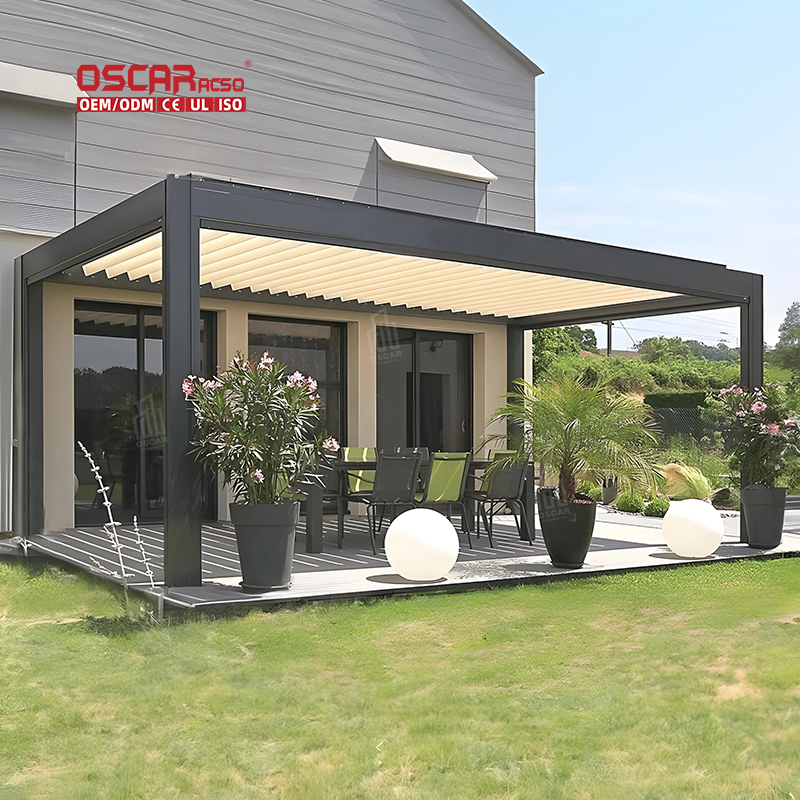Pergola Origins, Tracing the Timeless Garden Structure\’s Inventive Spirit
The pergola 🌿, that elegant garden structure we often see supporting climbing plants and providing shaded walkways, does...
The pergola 🌿, that elegant garden structure we often see supporting climbing plants and providing shaded walkways, doesn’t have a single, named inventor. Its origins are ancient and practical, evolving over centuries to become the beloved feature in our landscapes today. While we might crave a simple story of a brilliant mind behind it, the pergola’s history is more about gradual cultural and functional development across different civilizations.
.jpg)
The Ancient Precursors and Practical Beginnings
It’s fascinating to consider how ancient societies, from the Egyptians to the Romans, used basic structures for shade and plant support. These weren’t called “pergolas” yet, but the core idea was there—using vertical posts and horizontal beams to create a sheltered, green space. The concept likely emerged from practical need rather than a single flash of inspiration.
The term “pergola” itself has Italian roots. It’s thought to derive from the Latin word pergula, which referred to a projecting eave or a porch. This hints at its primary function: providing shelter and a framework for vines. Some also suggest a linguistic link to the Italian town of Pergola, though this connection might be more poetic than factual. The beautiful Marche town of Pergola is known for its history and art, like the gilded Bronzes of Cartoceto, not necessarily for inventing the garden structure.
A stronger historical connection exists with the ancient city of Pergamon (also known as Pergamum) in Asia Minor. Renowned for its magnificent libraries and cultural advancements, Pergamon was a center of innovation. While not directly credited with inventing the pergola, the architectural principles and love for harmonious outdoor spaces cultivated in such ancient hubs undoubtedly influenced its development. The Pergamon Altar, a monumental structure, showcases the grandeur that ancient architects could achieve.
.jpg)
Evolution and Refinement Across Eras
The pergola as we more closely recognize it began to take shape during the Italian Renaissance. This period saw a renewed interest in classical ideas, art, and architecture. Gardens became extensions of living spaces—outdoor rooms for leisure and contemplation. Elegant pergolas, often made from stone or wood and adorned with vines like grapes or wisteria, became central features in these gardens. They provided shade, defined pathways, and added a sense of romance and order.
A key moment in the architectural history of shaded structures was the construction of the Teatro della Pergola in Florence. Built in 1656, its name is derived from the Via della Pergola where it’s located. While it’s an opera house and not a garden feature, its name perpetuates the term and reflects the cultural importance of such structures in Italy during that time.
.jpg)
The Pergola’s Journey to the Modern World
From European gardens, the pergola’s charm spread globally. It found a special place in British and American landscape design, often used in Arts and Crafts movement gardens to create intimate, naturalistic settings. Its purpose expanded beyond mere shade; it became a tool for defining space and enhancing the beauty of a garden.
The materials and styles have evolved—from classic wood and stone to modern composites and metals—but the essence remains. Today, the pergola is a versatile structure. It can be a simple support for roses in a backyard or a grand, motorized-louvered structure on a rooftop, often integrated with lighting and heating for year-round use.
So, Who Really Invented the Pergola?
Asking “who invented the pergola” is like asking who invented the doorway. It was not the brainchild of a single person but a natural architectural evolution. Its development was a collaborative effort across centuries, driven by:
- •
Practical need for shade and plant support.
- •
Cultural shifts that valued outdoor living and beauty.

- •
Architectural experimentation in various ancient and classical civilizations.
The true “inventors” were countless unnamed gardeners, architects, and homeowners who continuously adapted and refined the form to suit their needs and tastes.
More Than Just Wood and Vines: The Pergola’s Lasting Appeal
The genius of the pergola lies in its perfect blend of function and art. It’s a structure that actually improves with time as plants grow and weave through it, changing with the seasons. It creates a unique play of light and shadow, offering a dappled shade that feels alive and connected to nature.
In our modern world, the pergola has seen a huge resurgence. It answers a growing desire to create beautiful, functional outdoor living areas. It’s no longer just a garden accessory but a central feature for entertaining, dining, and relaxing. Modern interpretations might include:
- •
Retractable canopies for adjustable shade.
- •
Integrated lighting and speakers for ambiance.
.jpg)
- •
Durable, low-maintenance materials like powder-coated aluminum.
Its timeless design proves that some concepts are so perfect they only need tweaking, not reinvention.
Personal Perspective: The Unsung Hero of Garden Design
In my view, the pergola is the unsung hero of garden design. While flashier features like water fountains or sculpted topiaries get attention, the humble pergola does the quiet, essential work of making a garden feel like a home. It’s a framework for life—for growing food, hosting friends, or finding a quiet moment. Its invention wasn’t a single event but a slow, beautiful discovery of how to best live in harmony with our gardens. Its enduring popularity is a testament to its simple, yet profound, utility and beauty.

